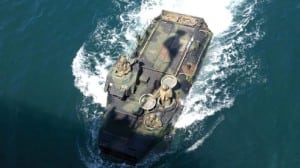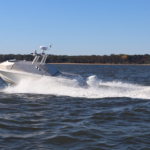
The Marine Corps on Tuesday awarded BAE Systems and Science Applications International Corp. [SAIC] contracts worth a total $225 million to build prototypes of the service’s amphibious combat vehicle.Each contract is for 13 vehicles with options for a further three that will enter the engineering and manufacturing development phase of the program. BAE's contract is for $103.8 million, while SAIC's is for $121.5 million. The companies were chosen from a field of five, leaving behind Lockheed Martin [LMT], General Dynamics [GD] and Advanced…

 By
By 










